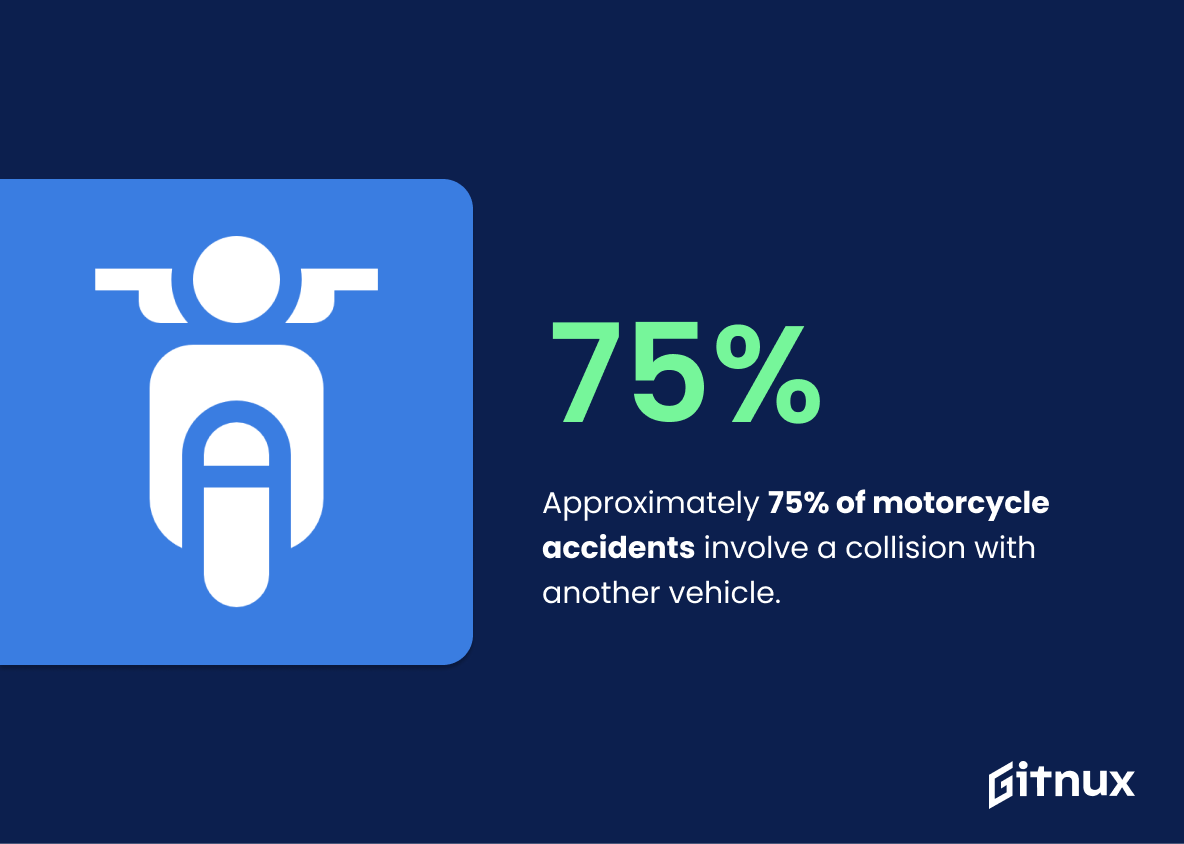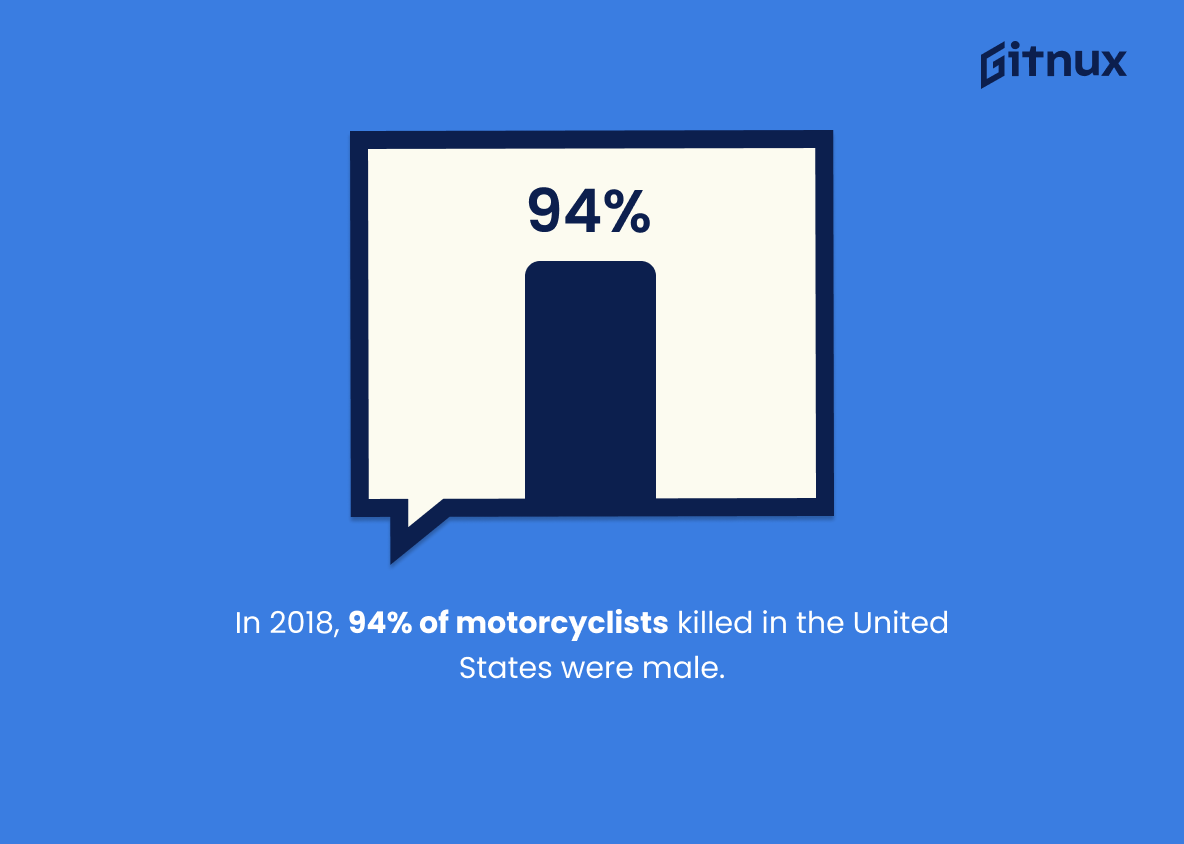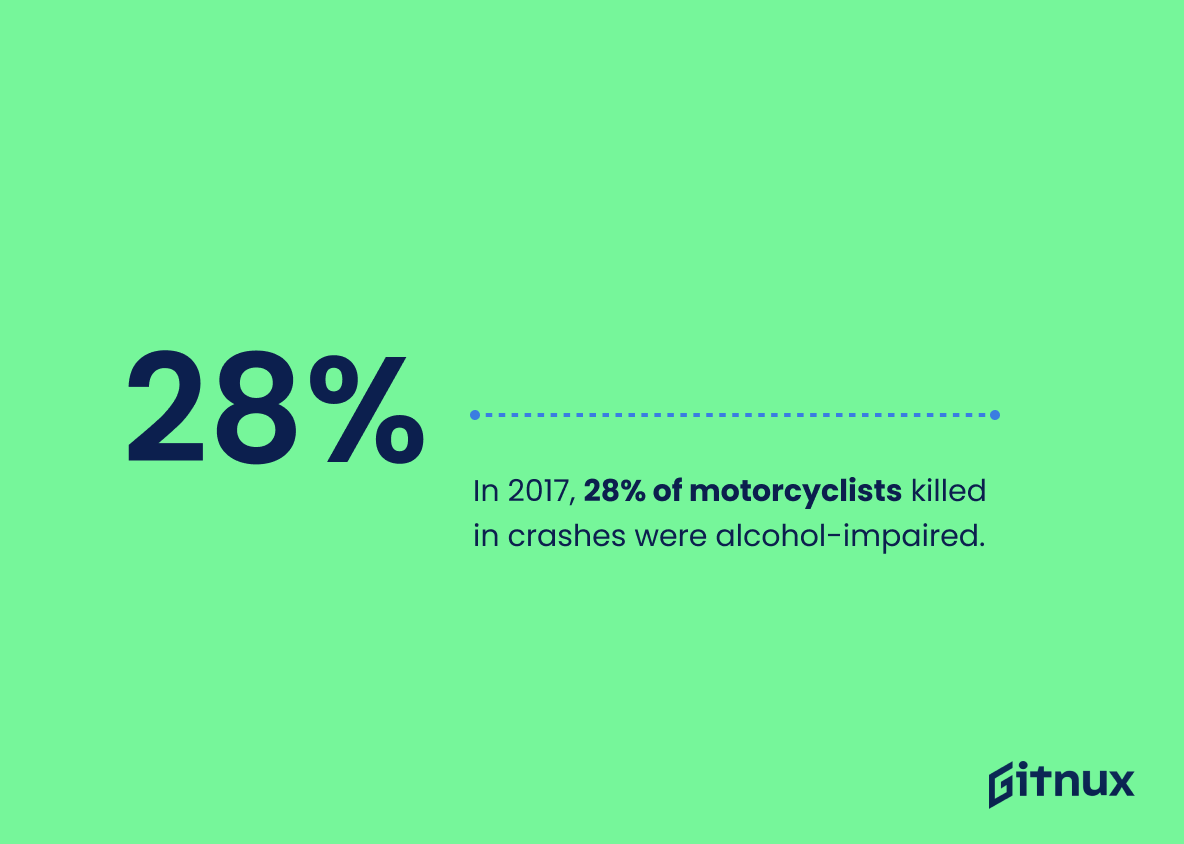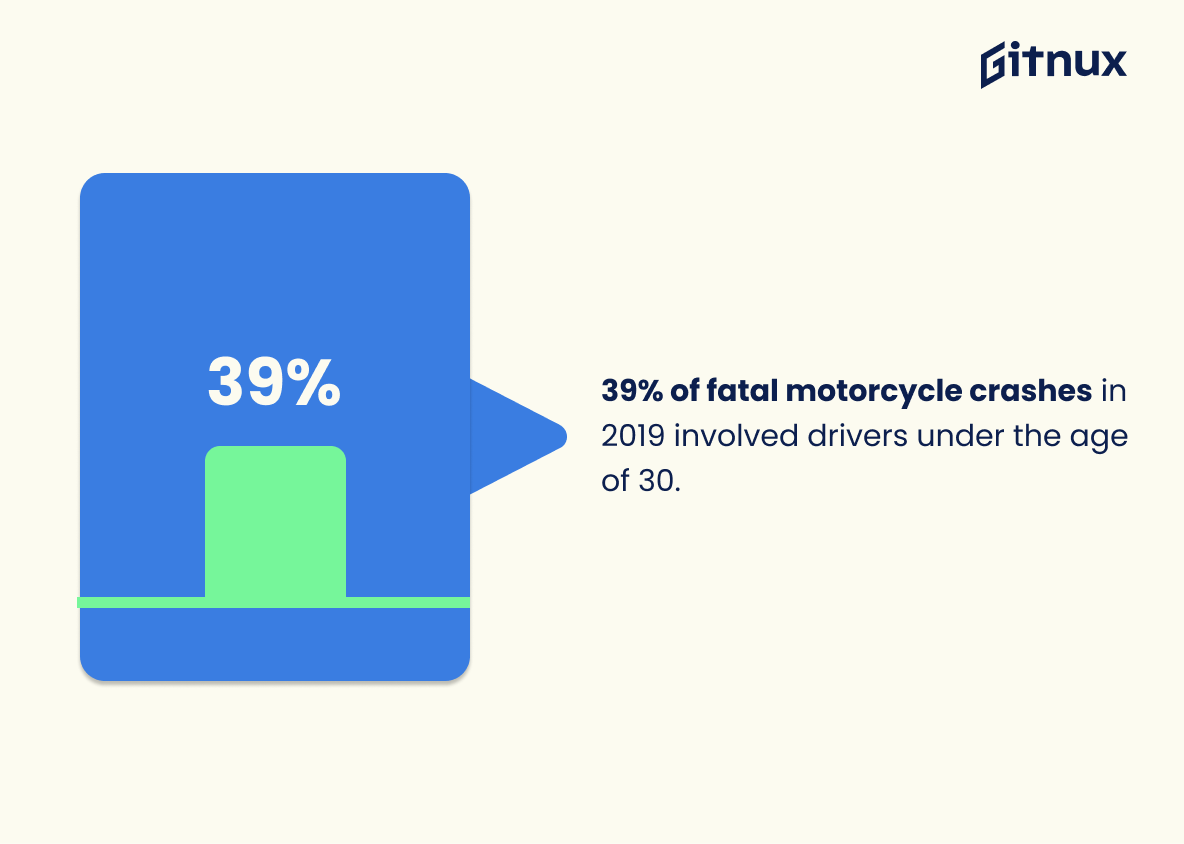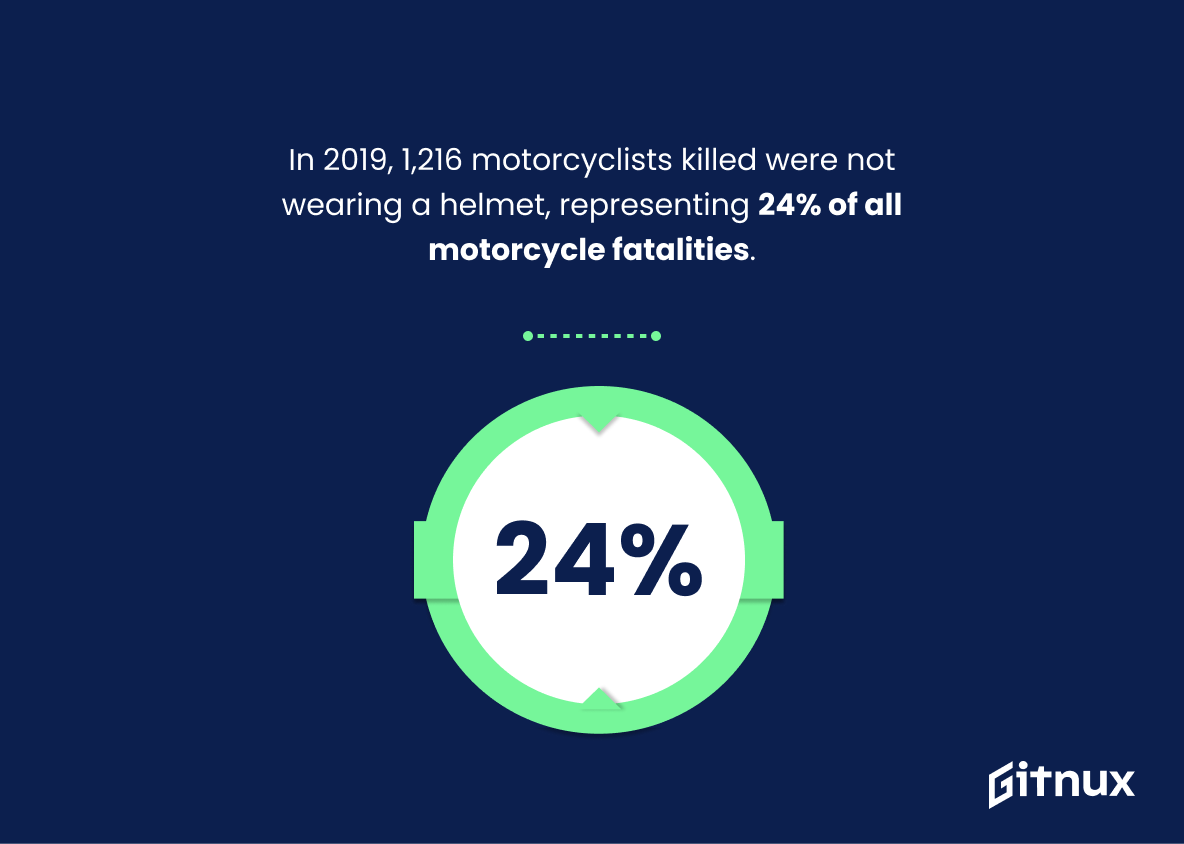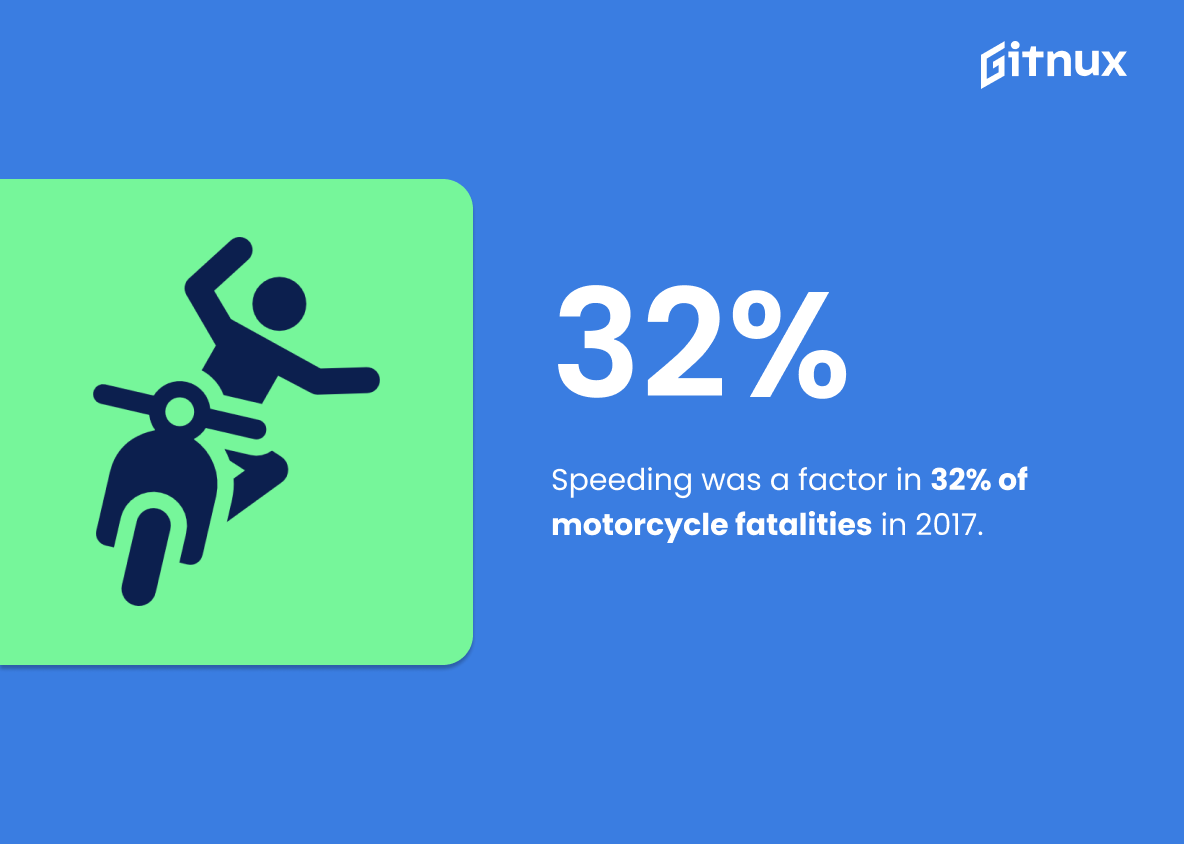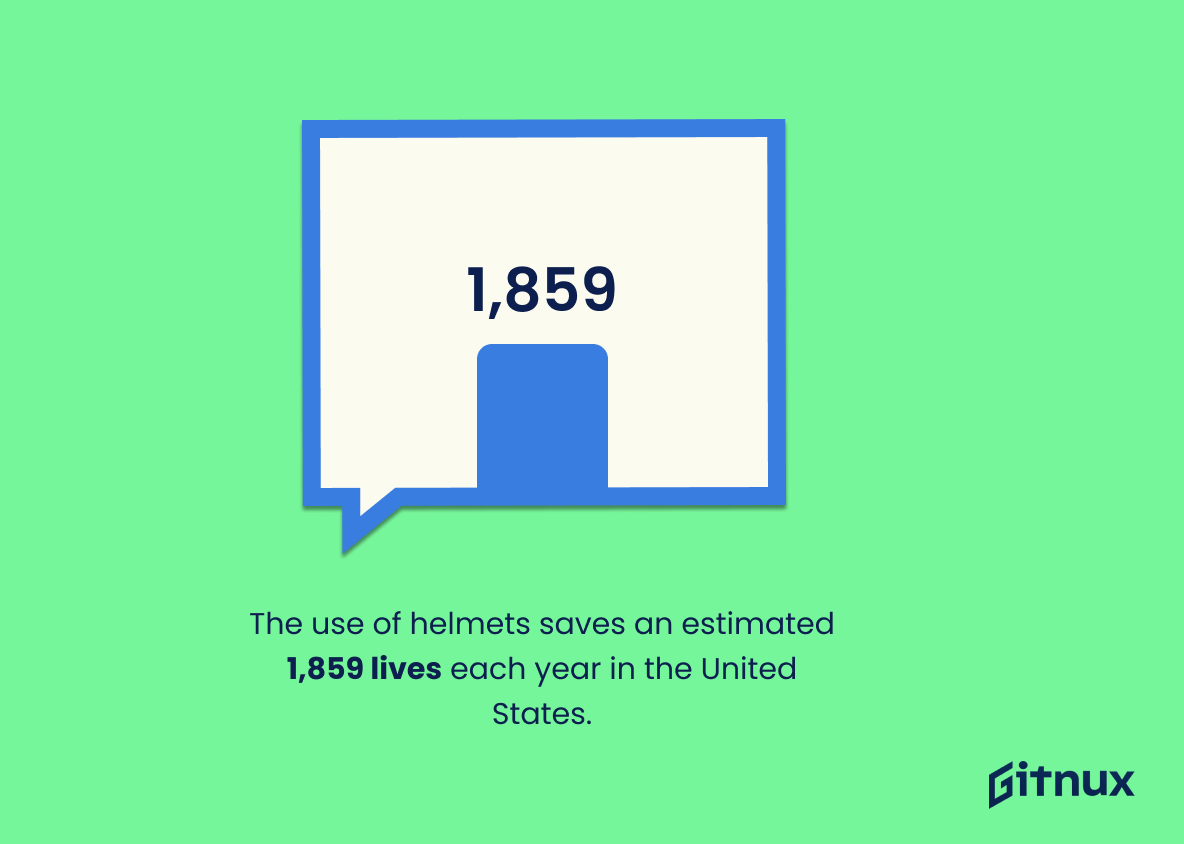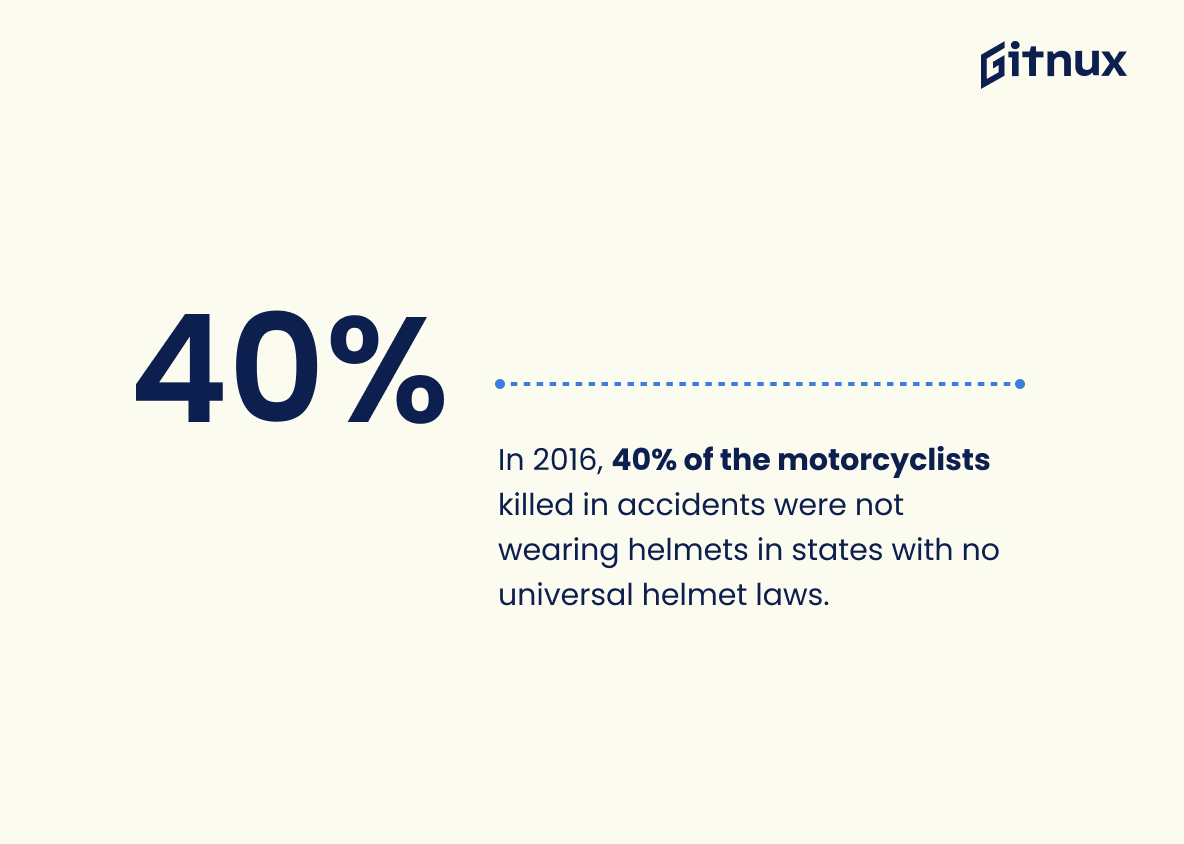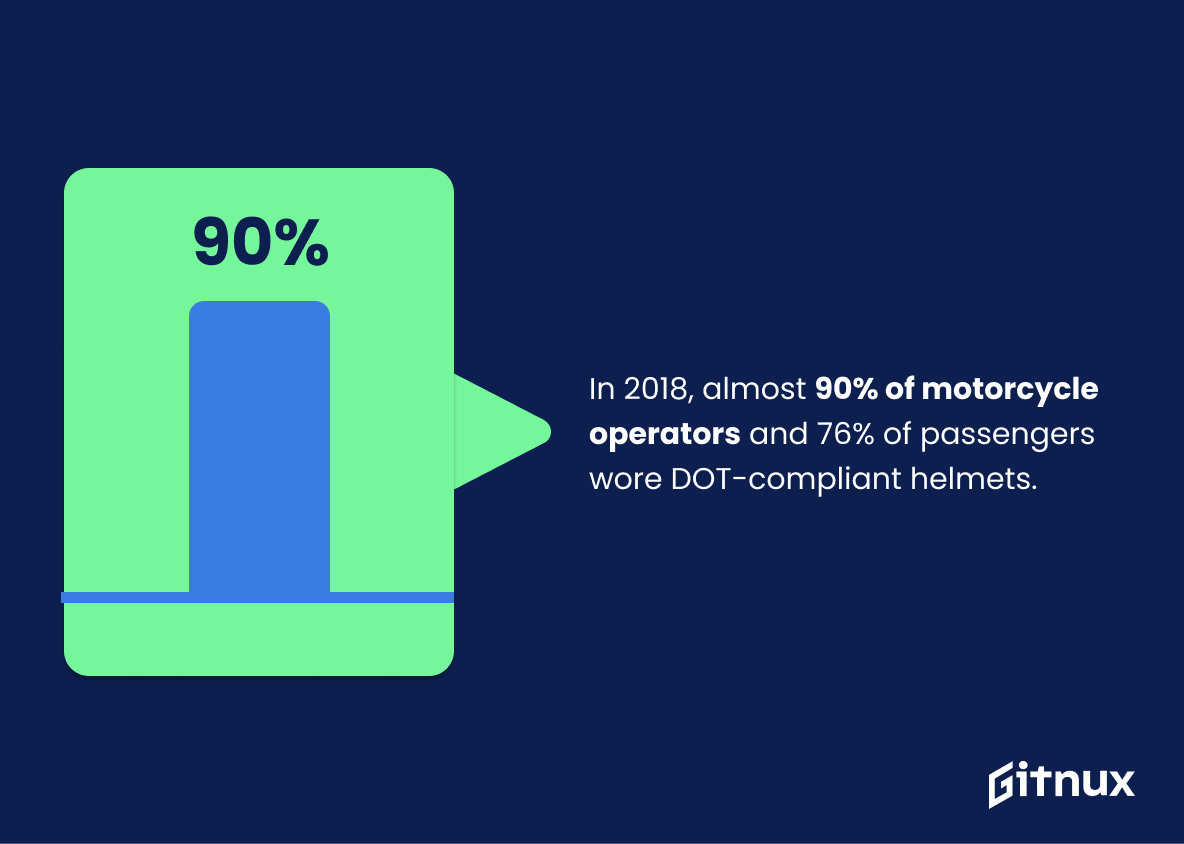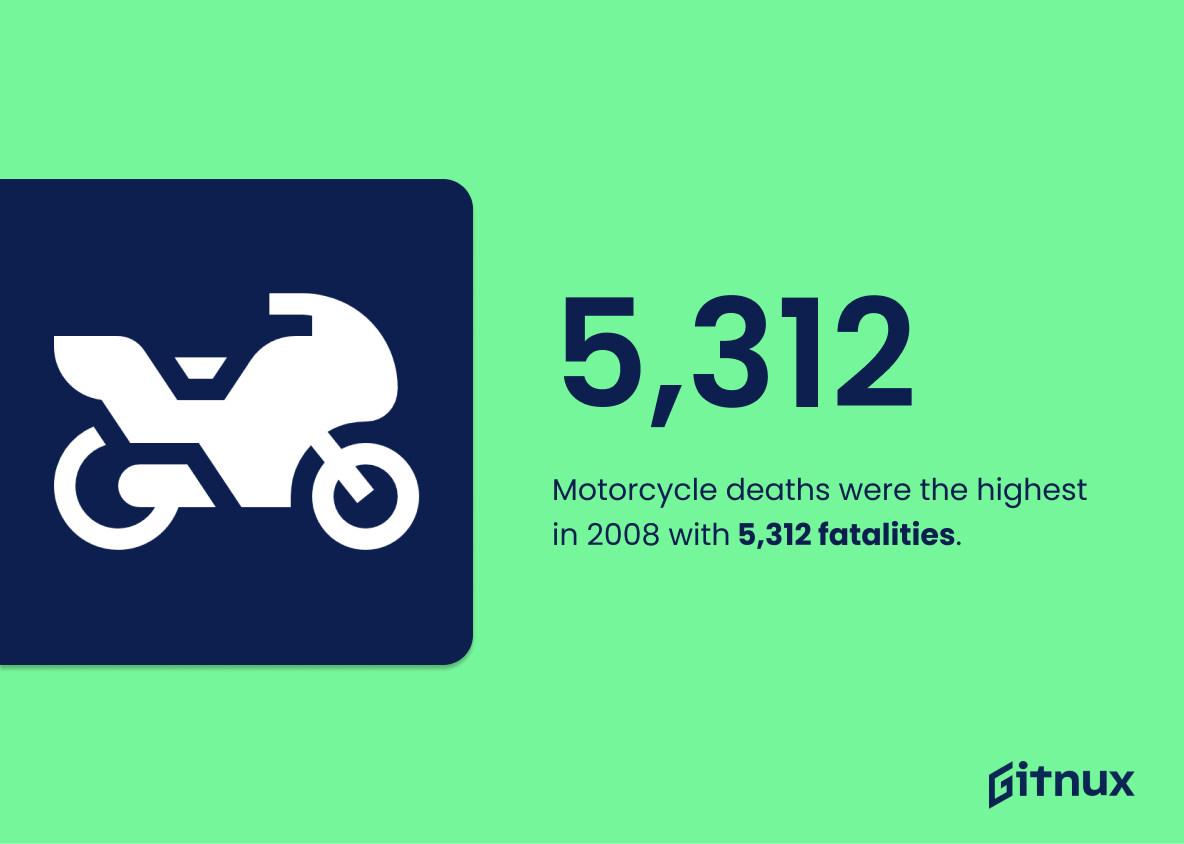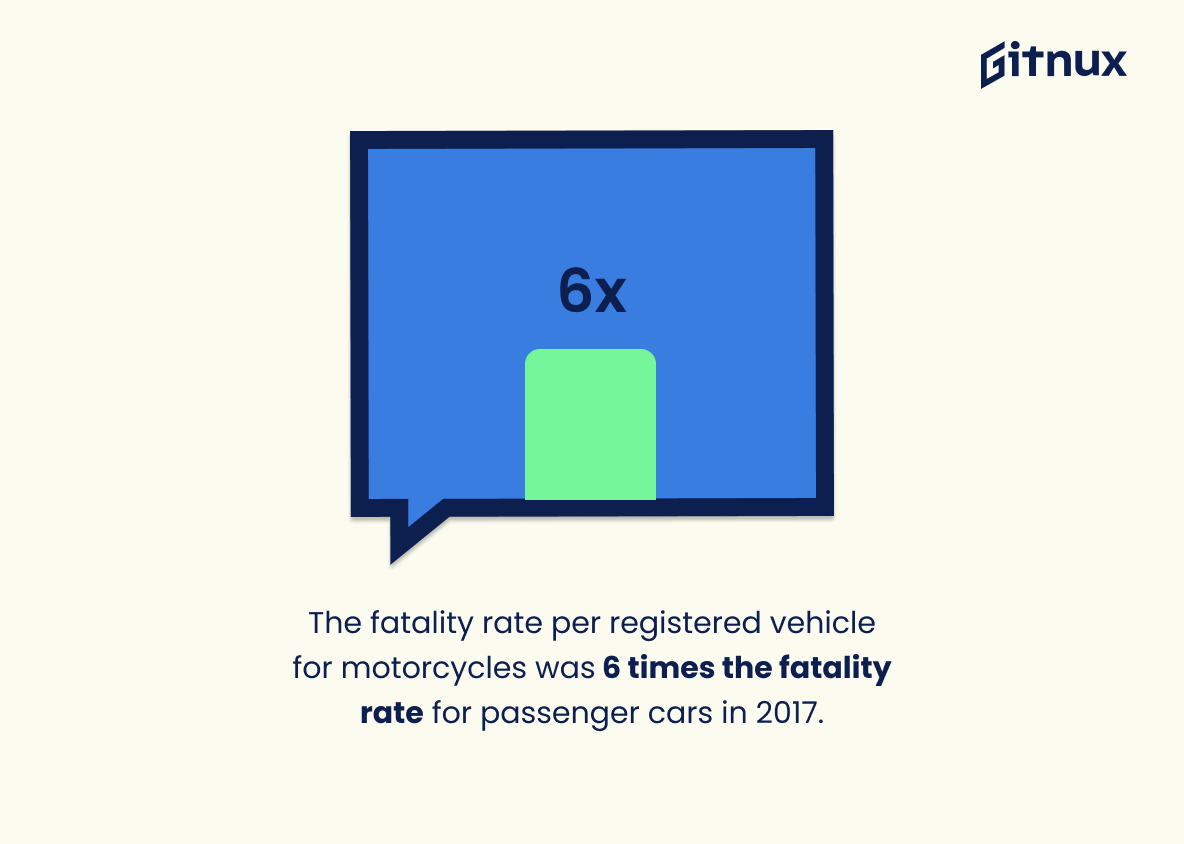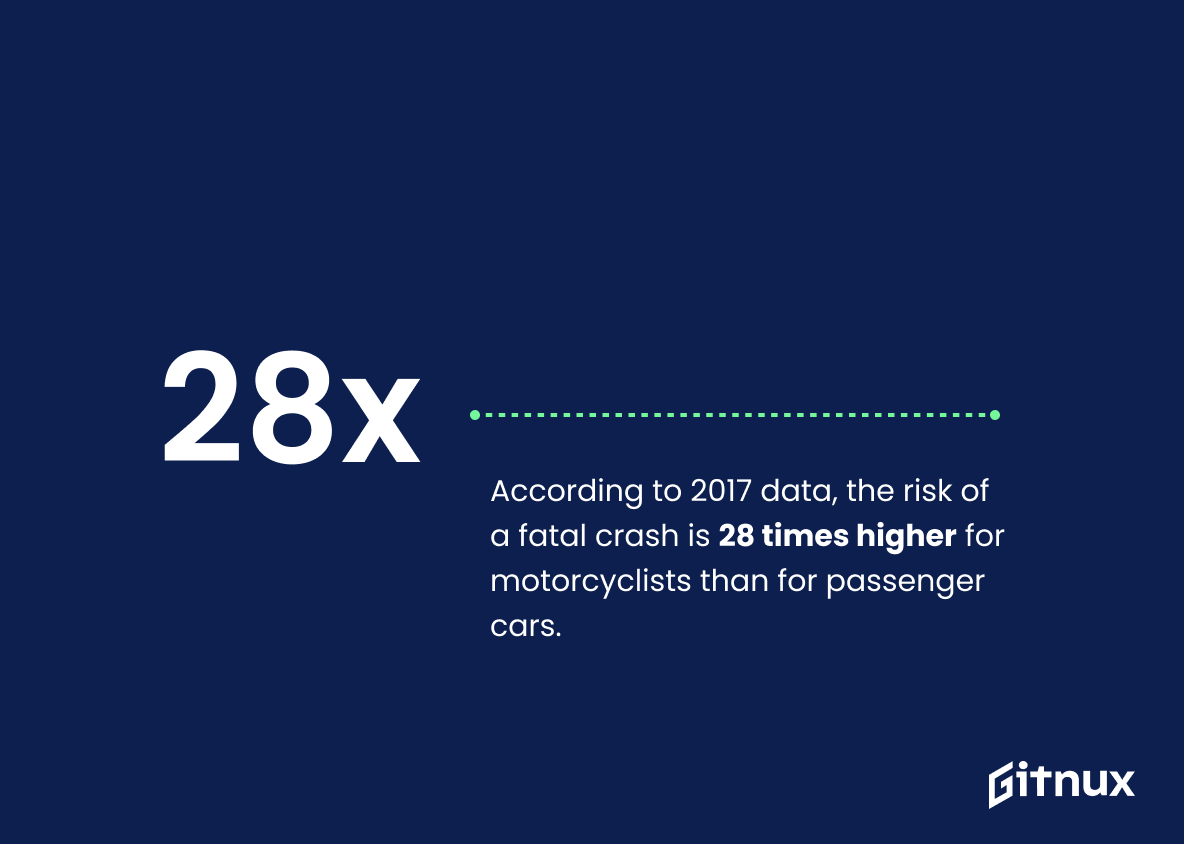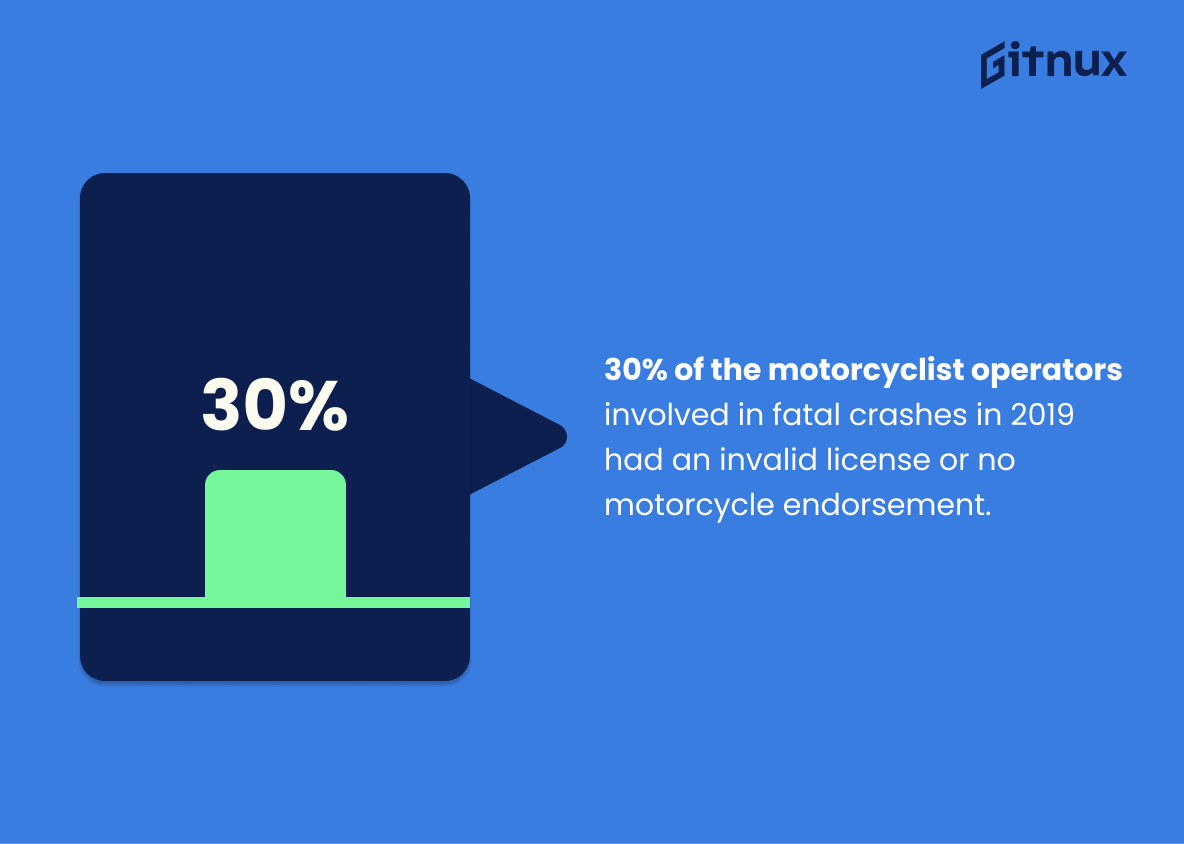Motorcycle crashes are a major cause of death and injury in the United States. According to statistics from the National Highway Traffic Safety Administration (NHTSA), motorcycles make up 3% of all registered vehicles, but account for 14% of all traffic fatalities. In 2019 alone, there were 5,014 motorcyclists killed in traffic crashes across the country. Approximately 75% of motorcycle accidents involve a collision with another vehicle while 94% of those killed were male riders. Additionally, 28 percent involved alcohol-impaired drivers and 39 percent involved operators under 30 years old.
Furthermore, 1,216 motorcyclists who died in 2019 weren’t wearing helmets at the time – representing 24 percent of total fatalities that year – while California had more deaths than any other state followed by Texas and Florida respectively according to Statista data from 2017. Speeding was also found to be a factor in 32 percent fatal motorcycle crashes during this same period as well as 45 percent involving single-vehicle collisions which is higher than most other types on roadways today according to IIHS research findings from 2018/2019 reports..
The use helmets can save lives too; an estimated 1,859 people each year when worn properly per NHTSA estimates along with 2100 saved annually due solely helmet usage reported by Science Direct journal article published last year . However 40 %of those not wearing them lived states without universal laws requiring their use per GAO report released back 2016 . On positive note , 90 %of operators & 76 %passengers wore DOT compliant headgear 2018 study showed ..
In conclusion it’s clear that taking proper safety precautions such as using protective gear like helmets or avoiding speeding can help reduce these numbers significantly over time if we continue working together towards safer roads for everyone.
This statistic is a stark reminder of the disproportionate risk that motorcyclists face on the roads. It highlights the need for greater awareness and safety measures to protect motorcyclists from the dangers of the road. It also serves as a call to action for all drivers to be more mindful of motorcyclists and to take extra precautions when sharing the road with them.
In 2019, there were 5,014 motorcyclists killed in traffic crashes in the United States.
This statistic is a stark reminder of the dangers of riding a motorcycle. It serves as a powerful reminder that motorcyclists are at a much higher risk of being killed in a traffic crash than other motorists. It is a sobering reminder that motorcyclists must take extra precautions when riding to ensure their safety.
Motorcycle Crashes Statistics Overview
Approximately 75% of motorcycle accidents involve a collision with another vehicle.
This statistic is a stark reminder of the dangers of motorcycle riding, as it highlights the fact that the majority of motorcycle accidents involve a collision with another vehicle. This means that motorcyclists are particularly vulnerable to the risks posed by other drivers on the road, and that they must take extra precautions to ensure their safety. This statistic is an important reminder that motorcyclists must be aware of their surroundings and take the necessary steps to protect themselves.
In 2018, 94% of motorcyclists killed in the United States were male.
This statistic is a stark reminder of the disproportionate risk that male motorcyclists face on the roads. It highlights the need for greater awareness of the dangers of motorcycle riding, particularly among men, and for more effective safety measures to be put in place to protect them.
In 2017, 28% of motorcyclists killed in crashes were alcohol-impaired.
This statistic is a stark reminder of the dangers of riding a motorcycle while under the influence of alcohol. It highlights the importance of being aware of the risks associated with impaired driving and the need for riders to take extra precautions when operating a motorcycle. It also serves as a warning to other drivers to be aware of motorcyclists on the road and to be extra vigilant when sharing the road with them.
39% of fatal motorcycle crashes in 2019 involved drivers under the age of 30.
This statistic is a stark reminder of the dangers of motorcycle riding, particularly for younger drivers. It highlights the need for increased safety measures and education for those under the age of 30 who are more likely to be involved in fatal motorcycle crashes. It also serves as a warning to all drivers, regardless of age, to be aware of the risks associated with motorcycle riding and to take the necessary precautions to ensure their safety.
In 2019, 1,216 motorcyclists killed were not wearing a helmet, representing 24% of all motorcycle fatalities.
This statistic is a stark reminder of the importance of wearing a helmet when riding a motorcycle. It highlights the fact that a significant portion of motorcycle fatalities could have been prevented if the riders had taken the necessary safety precautions. It serves as a warning to all motorcyclists that not wearing a helmet can have deadly consequences.
California, Texas, and Florida lead in the highest number of motorcycle fatalities in the United States in 2017.
This statistic is a stark reminder of the dangers of motorcycle riding in the United States. California, Texas, and Florida are the three states with the highest number of motorcycle fatalities in 2017, indicating that riders in these states are particularly vulnerable to the risks of motorcycle riding. This data serves as a warning to all riders to take extra precautions when riding in these states, and to be aware of the potential dangers of motorcycle riding.
Speeding was a factor in 32% of motorcycle fatalities in 2017.
This statistic is a stark reminder of the dangers of speeding on a motorcycle. It highlights the importance of adhering to speed limits and driving safely, as even a small increase in speed can have devastating consequences. It serves as a warning to all motorcyclists to be aware of the risks and take extra care when on the roads.
The use of helmets saves an estimated 1,859 lives each year in the United States.
This statistic is a powerful reminder of the importance of wearing a helmet when riding a motorcycle. It highlights the fact that, by taking a simple precaution, 1,859 lives can be saved each year in the United States. This is a stark reminder of the potential consequences of not wearing a helmet and the importance of taking safety seriously when riding a motorcycle.
In 2016, 40% of the motorcyclists killed in accidents were not wearing helmets in states with no universal helmet laws.
This statistic is a stark reminder of the importance of wearing a helmet while riding a motorcycle, especially in states with no universal helmet laws. It highlights the fact that not wearing a helmet can have deadly consequences, and that riders should take extra precautions to protect themselves when riding in states without helmet laws. This statistic is a powerful reminder of the need for riders to take responsibility for their own safety and to always wear a helmet when riding.
In 2018, almost 90% of motorcycle operators and 76% of passengers wore DOT-compliant helmets.
The fact that almost 90% of motorcycle operators and 76% of passengers wore DOT-compliant helmets in 2018 is a testament to the importance of safety when it comes to motorcycle riding. Wearing a helmet is one of the most effective ways to reduce the risk of serious injury or death in the event of a crash, and this statistic shows that many riders are taking the necessary precautions to protect themselves.
Single-vehicle motorcycle crashes account for about 45% of all motorcyclist fatalities.
This statistic is a stark reminder of the dangers of riding a motorcycle. It highlights the fact that single-vehicle motorcycle crashes are a major cause of motorcyclist fatalities, and that riders should take extra precautions to ensure their safety. It also serves as a warning to other drivers to be aware of motorcyclists on the road and to drive with caution.
Motorcycle deaths were the highest in 2008 with 5,312 fatalities.
This statistic is a stark reminder of the dangers of motorcycle riding, particularly in 2008. It highlights the need for increased safety measures and awareness of the risks associated with motorcycle riding. It also serves as a warning to those considering taking up the activity, and a reminder to those already riding to take extra precautions.
The fatality rate per registered vehicle for motorcycles was 6 times the fatality rate for passenger cars in 2017.
This statistic is a stark reminder of the dangers of riding a motorcycle. It highlights the fact that motorcyclists are at a much higher risk of being involved in a fatal crash than those driving passenger cars. This is an important statistic to consider when discussing motorcycle crashes, as it serves as a reminder of the need for riders to take extra precautions when on the road.
According to 2017 data, the risk of a fatal crash is 28 times higher for motorcyclists than for passenger cars.
This statistic is a stark reminder of the dangers of riding a motorcycle. It highlights the fact that motorcyclists are far more likely to be involved in a fatal crash than those in passenger cars, and serves as a warning to those considering taking up motorcycling.
30% of the motorcyclist operators involved in fatal crashes in 2019 had an invalid license or no motorcycle endorsement.
This statistic is a stark reminder of the importance of having a valid license and motorcycle endorsement when operating a motorcycle. It highlights the fact that not having the proper credentials can have serious consequences, as it can lead to fatal crashes. This statistic serves as a warning to all motorcyclists to make sure they are properly licensed and endorsed before taking to the roads.
Collisions with fixed objects, like guardrails or parked vehicles, accounted for almost 22% of motorcyclist deaths in 2019.
This statistic is a stark reminder of the dangers of motorcycling, as it highlights the fact that a significant portion of motorcyclist deaths are due to collisions with fixed objects. It serves as a warning to riders to be extra vigilant when on the road, as even a seemingly minor crash can have fatal consequences. Furthermore, it is a call to action for authorities to take steps to reduce the number of such collisions, such as installing guardrails and other protective barriers in areas where motorcyclists are likely to be present.
In 2018, about 2,100 lives were saved by using a motorcycle helmet in the United States.
This statistic is a powerful reminder of the importance of wearing a motorcycle helmet. It highlights the fact that wearing a helmet can be the difference between life and death in the event of a crash. It also serves as a stark reminder of the dangers of riding a motorcycle and the importance of taking safety precautions.
Conclusion
Motorcycle crashes are a serious issue in the United States, with motorcyclists accounting for 14% of all traffic fatalities despite making up only 3% of registered vehicles. In 2019 alone, 5,014 motorcyclists were killed in traffic accidents and approximately 75% involved collisions with other vehicles. The majority of those killed (94%) were male and 28% had been drinking alcohol prior to their crash. Additionally, 39% of fatal motorcycle crashes that year involved drivers under 30 years old while 1,216 deaths occurred due to riders not wearing helmets – 24%. California was the state with the highest number of motorcycle fatalities followed by Texas and Florida respectively; speeding was also found to be a factor in 32%, as well as single-vehicle crashes which accounted for 45%. Wearing DOT-compliant helmets is an important safety measure that can save lives: according to 2016 data 40 percent more people died from riding without one than when they did wear them; additionally 90 percent operators wore compliant helmets compared 76 percent passengers who did so too. Finally ejection has been identified as one leading cause among motorcyclist deaths at 60%, highlighting how crucial it is for riders take necessary precautions such as wearing protective gear before getting on their bikes.
References
0. – https://www.www.gao.gov
1. – https://www.www.nhtsa.gov
2. – https://www.www.iihs.org
3. – https://www.crashstats.nhtsa.dot.gov
4. – https://www.www.statista.com
5. – https://www.www.cdc.gov
6. – https://www.www.iii.org
7. – https://www.one.nhtsa.gov
